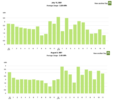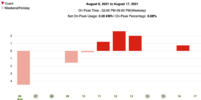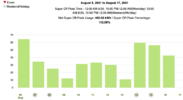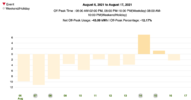I also have SoCal Edison, a model Y, and a wife that is at home all day. And your tiered pricing is exactly the same as mine.
-the whole game is to try to keep it in the first, and if not, at least the second tier.
-Central AC and car charging are the two biggest contributors to getting bumped into the next tier. In the wintertime, it’s going to be car charging and electric heaters (which can be 1500W per hour per each one unit!)
-someone above said it: AC is the biggest offender. the cost of central AC set at 78 degrees for the whole day for a few months was enough to buy a portable AC and use that in one room, and let the other rooms get hot. For me, that was the second biggest savings, the first being:
-Avoiding car charging at home altogether. I try to charge as much as possible at work, which gives me a tremendous discounted rate. Sometimes I would push to 100% and drive home, giving me about 80 something percent for the rest of the weekend. by having the car charge someplace else, it helps keep off tier three. Not everyone has this option available. In your case, use the supercharger, since its already lower than tier one by a little. Not saying always use it, but try to find a way to keep the inconvenience to a minimum.
-computers, especially laptops, dont use much electricity. Thats not what’s spiking your electric bill.
-TOU seems to benefit only if the entire family had not-normal work/life habits. Like working from 2:00PM to 10:00 PM that sort of thing. The hours that are expensive just so happens to match when everyone is at home using the electricity the most. Over forty cents per kWh? Very expensive, unless a powerwall (or other home battery system) is in place. Of course, with rates like that, car charging, and just about anything that uses a compresor will be at night-you ready for the change in lifestyle to fit a lower cost?






